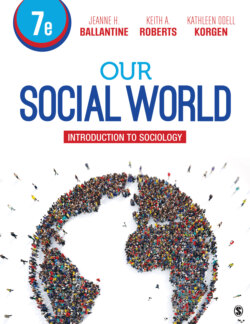Читать книгу Our Social World - Kathleen Odell Korgen - Страница 169
Online Social Networking
ОглавлениеToday, almost all teens in the United States are online. Whereas just 25% of teens see friends in person every day outside of school, 55% text their friends daily (Lenhart 2015). Over half of teens (61% of boys and 52% of girls) have met a friend online through social networking sites (e.g., Instagram or Snapchat) or online gaming sites. Girls who meet a friend online tend to do so through networking sites whereas boys are about equally likely to make a friend through an online game site (Lenhart 2015). One out of five teens has met a friend in person that they got to know online.
Although social networking sites can help people meet new friends, feel connected, and gain support from others, they can also lead to some negative consequences. For teens, in particular, social media sites can be full of friendship, drama, and bullying. As Figure 4.3 shows, 45% of teens say they are online almost constantly—an almost 100% increase in just 3 to 4 years. (Anderson and Jiang 2018; Lenhart 2015). Interaction via electronics is a major part of the socialization process.
Description
▼ Figure 4.3 Frequency of Internet Use by U.S. Teens
Source: Anderson and Jiang (2018), Pew Research Center.
Note: The “less often” category includes teens who say they use the Internet “about once a day,” “several times a week,” and “less often.”
The next Engaging Sociology looks at social network usage across various demographic groups. Examine this issue in more depth by answering the questions following Table 4.2.
Engaging Sociology
Uses and Consequences of Social Networking
▼ Table 4.2
Source: Pew Research Center (2018a, 2018b, 2018c).
Engaging Sociology
1 Among the demographic variables of sex, age, education, and income, which one has a significant impact on who uses social networking sites?
2 How does the impact of historical time period on the socialization process help explain the differences in social media usage described in the table?
3 How has your own use (or nonuse) of social networking sites influenced (a) with whom you interact and (b) how you communicate with people? (Or if you do not use social networking sites, discuss how your nonuse of such sites has impacted your relationships with those who are users.)
4 Overall, do you think the increase in the use of social networking sites has had more of a positive or negative impact on (a) your life (micro level), (b) your social class and educational institution (meso level), and (c) your society (macro level)? Why?
The Tsarnaev brothers—Tamerlan and Dzhokhar—were apparently well-adjusted teens while in high school, but they were deeply influenced by Internet exchanges and by political websites. Eventually, they teamed together to plot the Boston Marathon bombings on April 15, 2013. Three people were killed, and roughly 280 people were injured, many losing limbs. The actions of these young men were spawned when they adopted ideologies deeply antagonistic to the United States through Internet socialization. In a country that values free speech, controlling such antisocial influences is a real dilemma for law enforcement (Crary and Lavoie 2013).
Perhaps the most important aspect of television and computers is something we do not fully understand but that has frightening potential. For the first time in human history, we have powerful agents of socialization in the home from a child’s birth onward. Time spent watching television or playing computer games means less time spent engaging in interaction with family members, caregivers, and peers. Intimate family bonds formed of affection and meaningful interaction are being altered by the dominant presence of electronic media in the home. In addition, those who control the flood of mass media messages received by children may have different interests and concerns than parents.
Without a doubt, a significant part of the informal socialization process occurs with the assistance of electronic equipment that shares the home with parents and siblings and that commands a significant portion of a child’s time and attention. We also know that macro forces, such as globalization, have influenced school curricula and media content. We move next to a discussion of some of the national and global processes that influence socialization.
